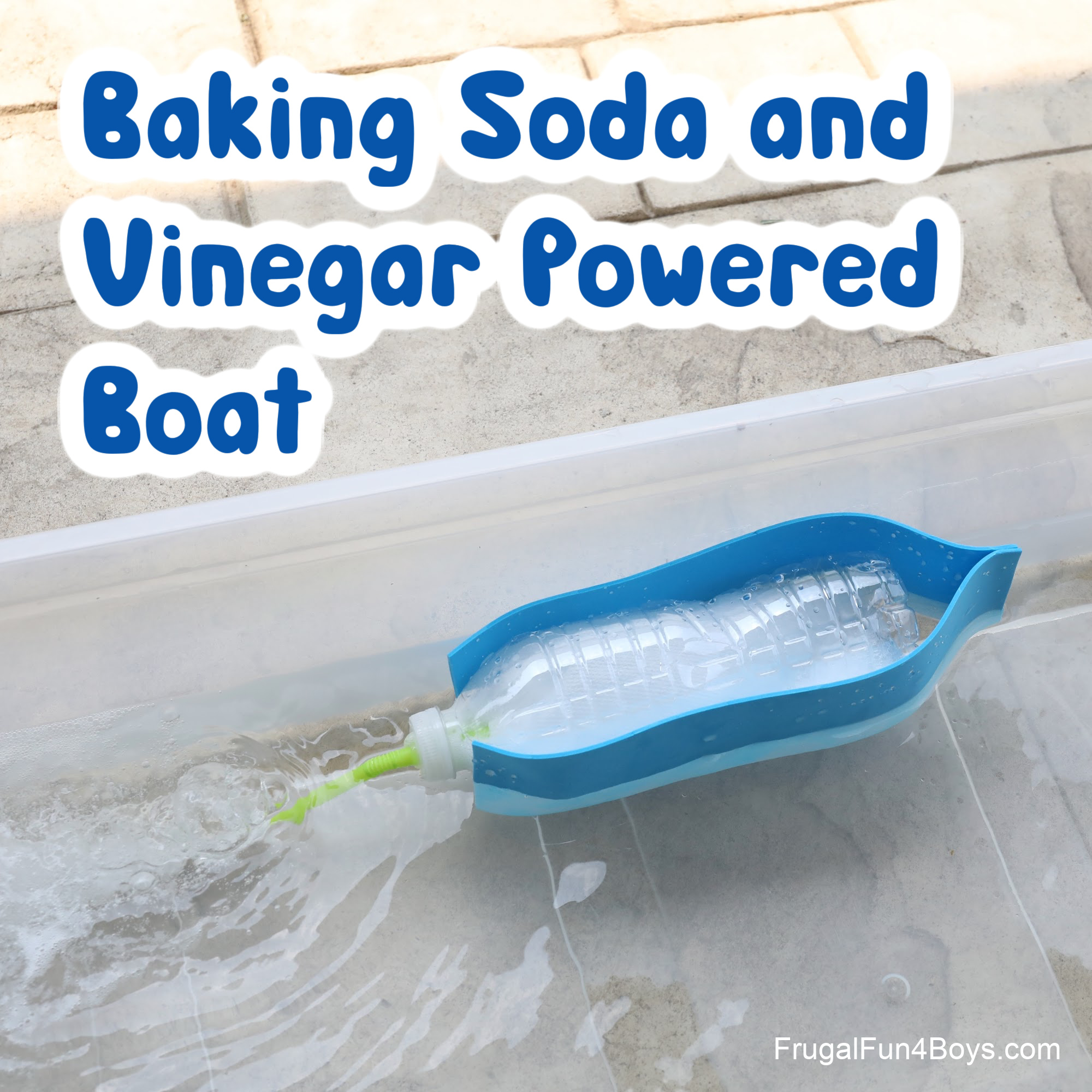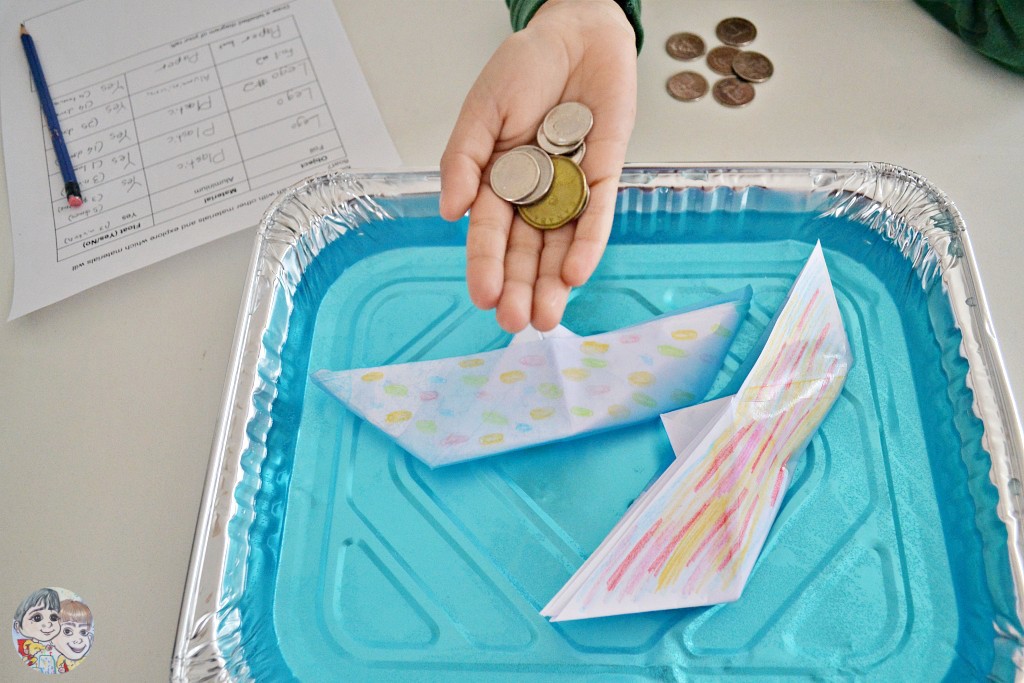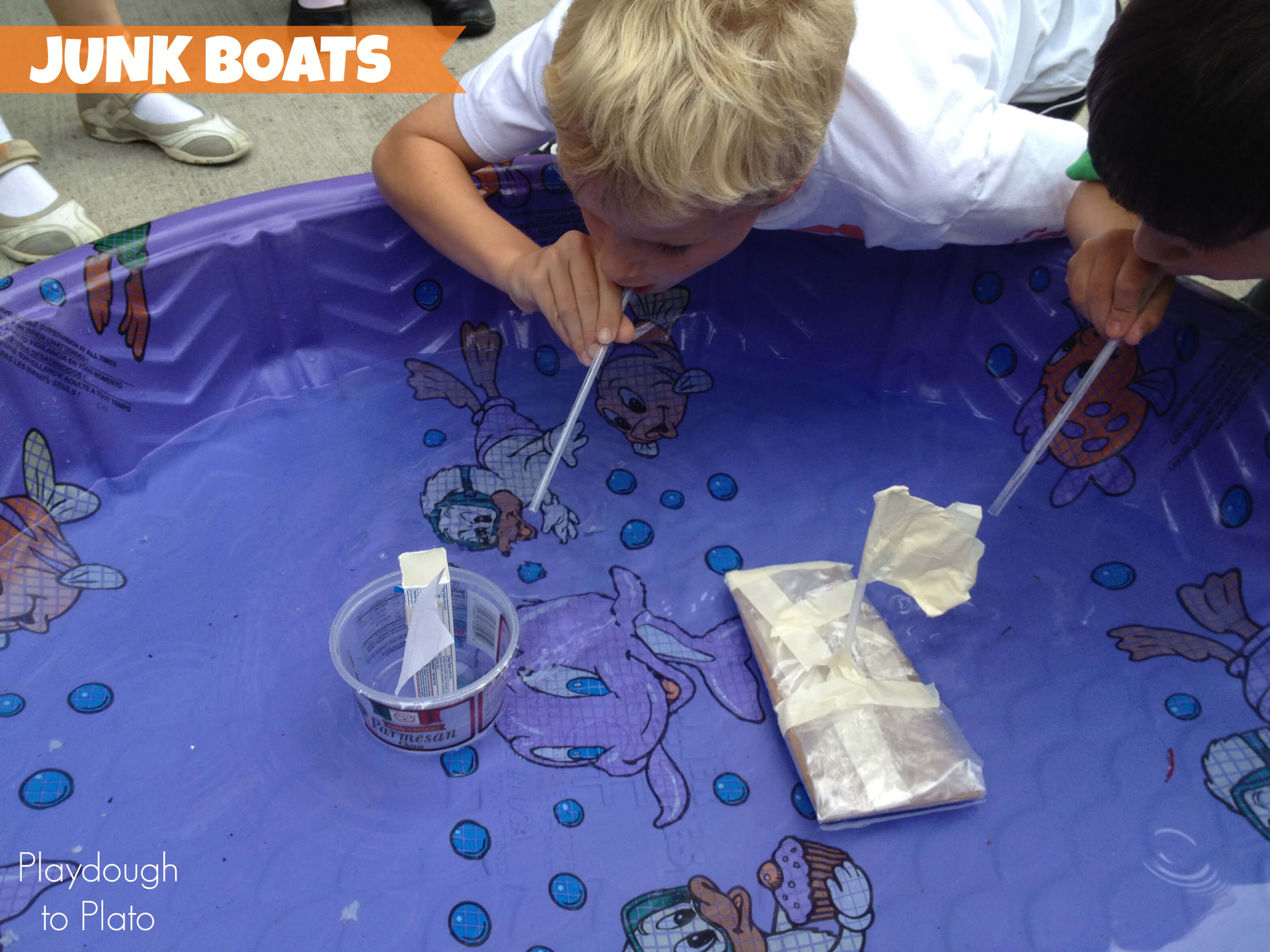
Floating Boat Craft for Kids The Activity Mom
Combine the wonders of science, technology, engineering, and math with boat crafts that teach kids about buoyancy, propulsion, and design. Watch their eyes light up as they engineer boats that can move and float. Get out the hot glue gun to make straw boats that go with the power of wind. This simple DIY paddle boat is a great way to show.

They made a sail boat and experimented with different forces to try to make the boat move (for
Build a Water Sprinkler Toy. Explore captivating science experiments on aerodynamics and hydrodynamics. Investigate topics like buoyancy, lift, and drag while building and experimenting with boats, airplanes, and rockets.

Baking Soda and Vinegar Powered Boat Frugal Fun For Boys and Girls
1. Cut a slit in the middle of a kitchen sponge. Find the center of your boat by drawing an X on it, from corner to corner. Use a craft blade to cut a small slit in the center of that X. The slit needs to be big enough so that you can slip the end of your balloon through it. [1] The thicker the sponge is, the better.

How to make a Moving Boat 3D art Fun Arts and Crafts Activities for kids Learnfinity YouTube
2. DIY Paddle Boats. In the Make the Fastest Rubber Band Paddle Boat project, students design and build rubber band paddle boats and use different materials to see which will make the fastest boat. Samples are shown (in videos) for boats made from balsa wood, cardboard covered in duct tape, and popsicle sticks. Part of the experiment is to find a way to minimize drag and get the biggest push.

Clay Boat Kids Science Experiment Easy Teaching For Kids
Introduce children to floating and sinking with this easy science experiment. Kids will love designing and making tin foil boats and testing how well they float. They can investigate how many gems each boat can hold before it starts to sink, maybe even have a little competition. Even the youngest of scientists will enjoy this fun challenge.

Simple Boat Science Experiment Simple boat, Boat crafts, Holiday fun
When the boats were finished, we took them outside to play! Gently blowing on them was the best way to move them through the water. To learn how to make an Origami Boat, click HERE for visual instructions, or browse through the resources listed below. I can't wait to teach the boys more Origami, as it is a very relaxing and quiet activity!

STEM Activities science experiments for kids making a boat day in the STEM Lab makeaboat
Glue the straws together in halves. We glued 2 sets of 4 together before gluing both halves to each other in step 5. Glue the paper triangle to the popsicle stick to make the sail. Glue the popsicle stick to one half of your boat. Glue the two halves together so the the popsicle stick sail is in the middle.

Floating boat kids science experiment (Stem Activity) Craftionary
For young kids (age 3 - 4), put out two bowls to sort into, labeled "Blows in the Wind" and "the Wind Can't Move It". Put out heavy objects the wind obviously can't move, and light ones that it can. For older children, put out three bowls "Easy to Move with Wind", "Hard to Move with Wind" and "Didn't Move" and a.

Boat Experiments STEM Activities for Kids Kid World Citizen
Float a Boat STEM Challenges. September 6, 2022 By Emma Vanstone Leave a Comment. These simple boat themed STEM challenge s are easy, fun and great for all ages. The challenges work brilliantly for older children who can use them to practise setting up an investigation correctly and can be simplified for younger children who might like a pirate.

Floating boat kids science experiment (Stem Activity) Craftionary
Mama Pappa Bubba made cork sail boats with sparkly sails. Create a boat from a juice box. hands on : as we grow has the plan. Make pool noodle boats like Frogs and Snails and Puppy Dog Tails. Build wax boats like these from Housing a Forest. Race duck tape boats across the water.

Floating boat kids science experiment (Stem Activity) Craftionary
Step 2. First, we made our boat. I just traced a boat shape onto the foam, and then had my son do the cutting. Once we had the basic shape, I cut a slit in the middle for the sail. This can be done with scissors, but might be a little easier with a craft knife. Obviously, this is a grownup task!

Take their love of boats to the next level with these cool experiments you can easily do right
These two boats are very simple to make. - Aluminium foil: Take a sheet of foil and start rolling the sides to form a raft. - Paper: We created simple boats using printer paper. We created a video tutorial to show you how to make paper boat and foil boat. Video makes it super easy to follow instructions.

STEM Learning Activities For Kids At Home Fusion Early Learning Preschools
Line up three corks (side by side, not end-to-end). Use two rubber bands to hold the corks together, forming a "raft." Poke a toothpick into the center cork, so it sticks straight up. This is your boat's mast (the part that holds the sail). Cut a square of thin waterproof material (see materials list - don't use regular paper) to make a sail.

Floating boat kids science experiment (Stem Activity) Craftionary
Step 1. Fold your paper in half, and half again, then unfold the second one, so you can see the centre crease (fold line). 2. Fold in both top corners to meet the centre crease. 3. Fold up the bottom of one side, then turn over and fold up the other side. 4. Fold over the little corner triangles. 5.

Quick & Easy Boat Challenge for Kids Transportation theme preschool, Transportation activities
Experiment #3: Soap-Powered Boats. For this experiment, you'll need a foam sheet (or a flat piece of Styrofoam, juice carton, or plastic from the recycling bin). You'll also need scissors, dish soap, and a container of water. Cut out a boat shape. We used the same design as in experiment #2 above.

Sailboat Craft Easy Kids Activities AppleGreen Cottage
Fill the bathtub or a large shallow plastic container with 6 inches of water. Blow through the free end of your straw and fill up your balloon with air. Pinch the neck of your balloon to keep the air from escaping. Set your boat in the water. Make sure the straw is bent down so the free end of the straw is just below the water's surface.
- Kena Bridge Of Spirits Ps5 Fnac
- Do Not Miss The Chance To Blow
- Material Electrodos Pila De Combustible
- Suelo Radiante Con Gas Natural
- Festivos En Santa Cruz De Tenerife 2022
- Alquiler En La Costa 2023 Dueño Directo Precios
- Hoja De Calculo De Google Grafico
- Impacto Economio De Las Convenciones
- Crucero Arribes Del Duero Desde Aldeadavila
- Cuantos Dias Quitar Puntos Sutura